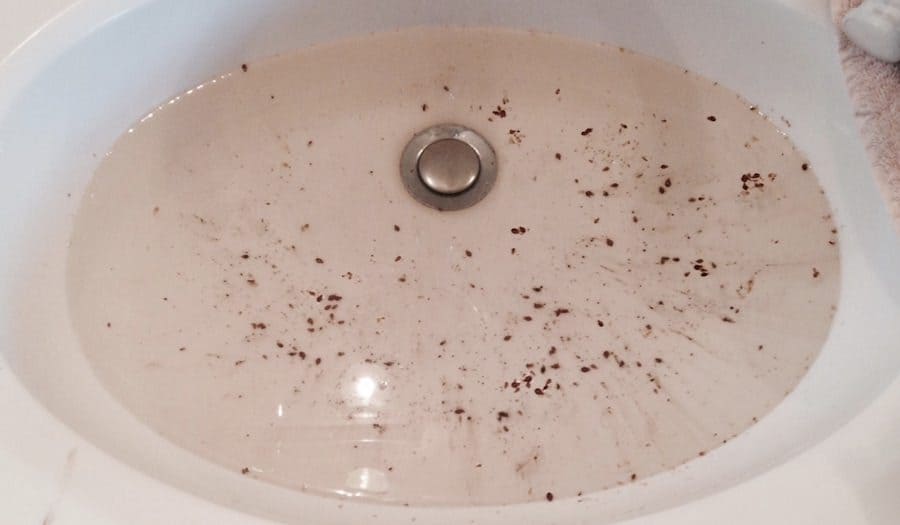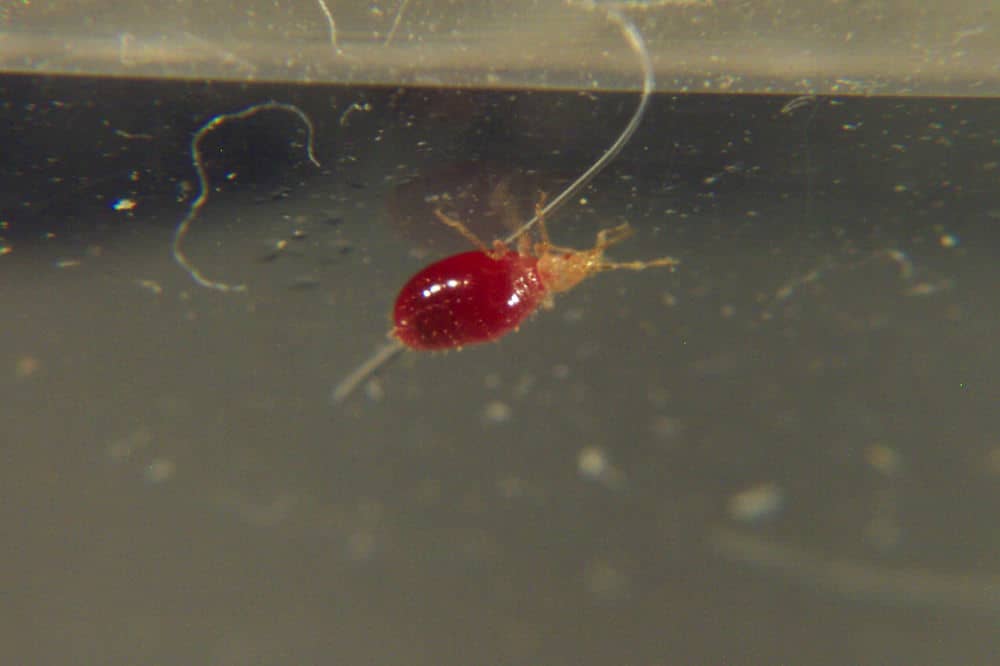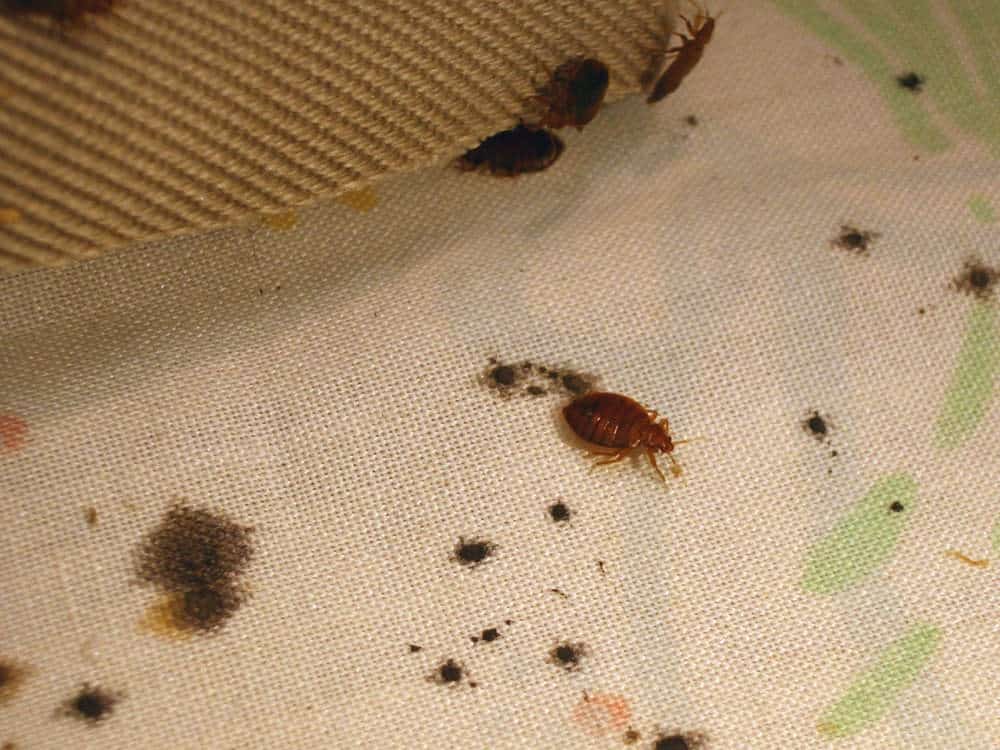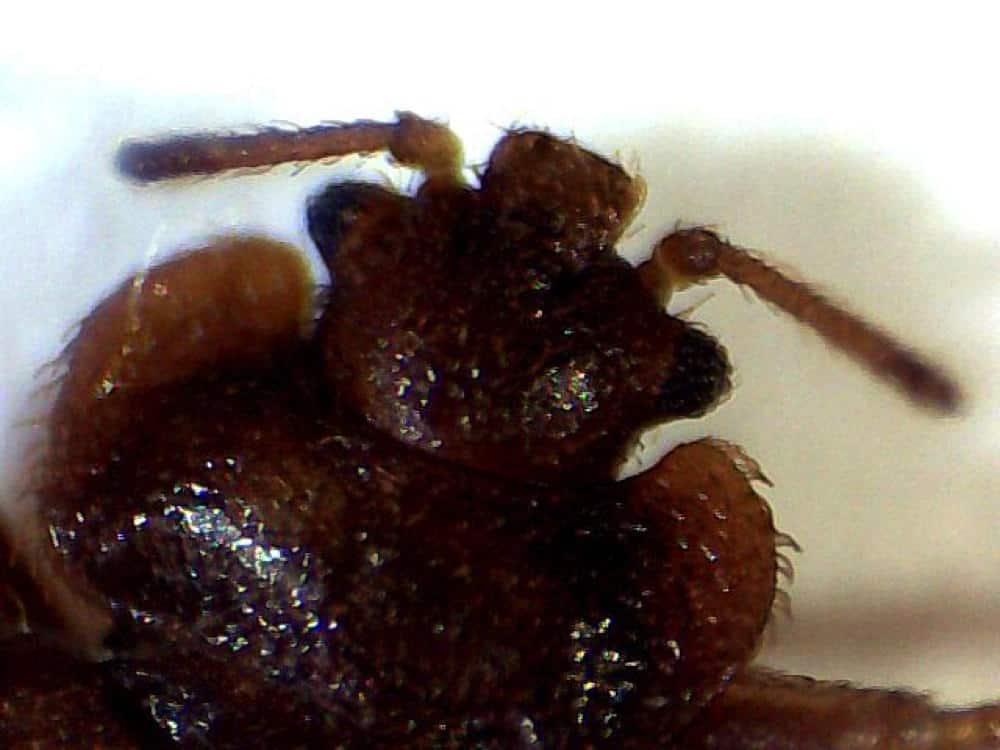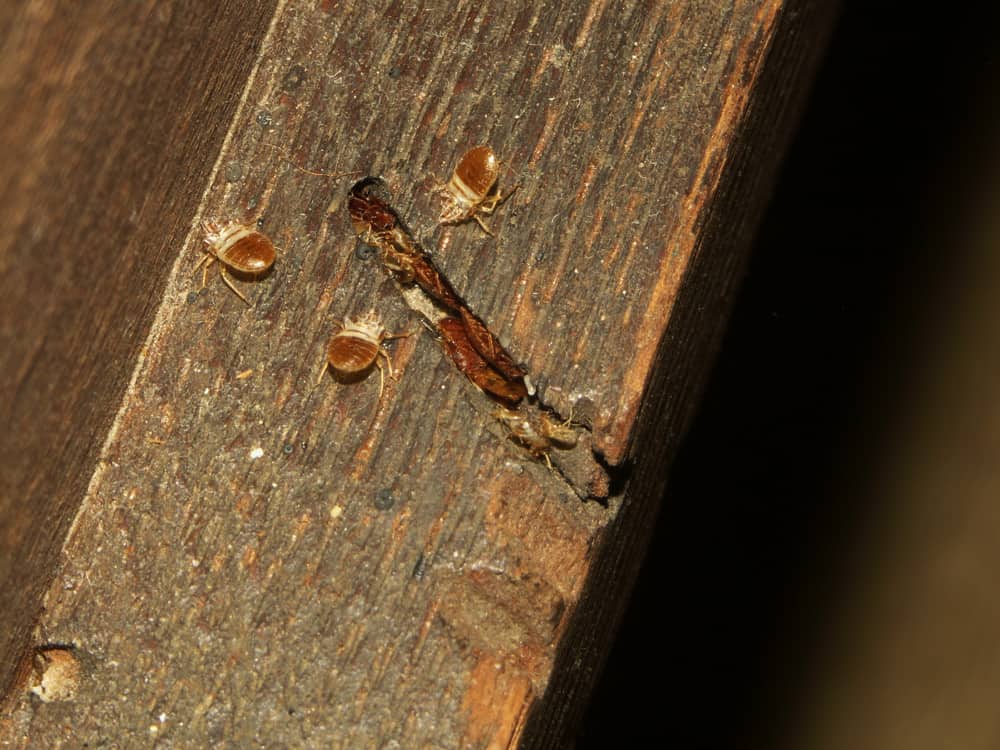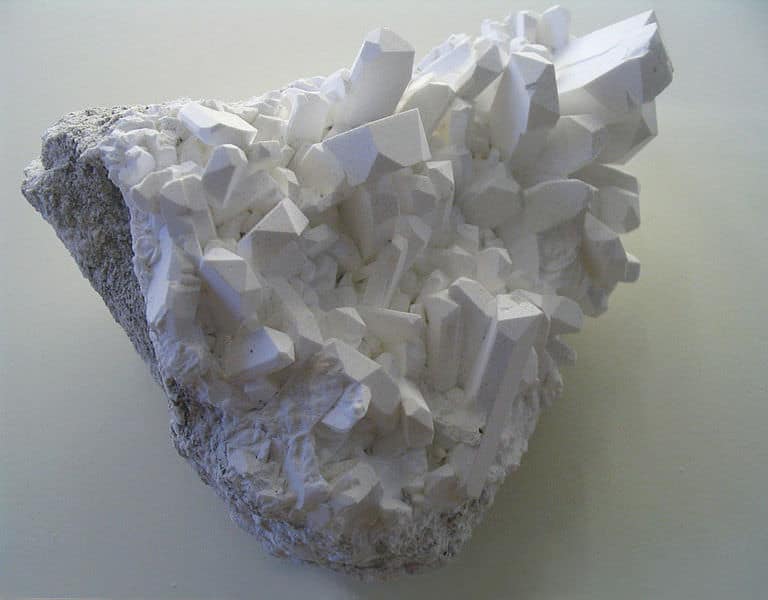How to Use Diatomaceous Earth for Bed Bugs
Getting rid of bed bug infestations often requires three parts: prevention, extermination, and maintenance. Using all three together is the only way to truly rid your house of bed bugs.
While total extermination often requires professional help (if you want it done in a timely and inexpensive manner), prevention and maintenance are easy enough to achieve on your own.
Diatomaceous earth is a good prevention and maintenance technique that also complements any extermination treatment you’re using.
Ready to learn more? Here’s what you need to know about using diatomaceous earth for bed bugs.
Using Diatomaceous Earth Against Bed Bugs
The way the products work depends on the individual product, the form it comes in, and the instructions provided by the manufacturer. Generally, however, DE works against any insect with an exoskeleton by acting as tiny shards of glass and puncturing the body, causing the insect to slowly dehydrate and eventually die.
If you’re uninterested in going through a local bed bug exterminator, it’s possible to use diatomaceous earth on its own as long as the appropriate steps are taken carefully to ensure safety and maximum effectiveness.
While few people recommend using it as the sole treatment for getting rid of an infestation, it is a helpful prevention or maintenance tool if your problem with bed bugs is beginning to get out of hand.
Using diatomaceous earth also puts down a barrier that prevents bed bugs from leaving a confined area, or stopping them from entering one.
Applying it is easy and often requires a few simple steps.
- Apply diatomaceous earth product
- Wait for it to kill bed bugs
- Clean it up
Step 1 – Purchase an appropriate product
When looking for Diatomaceous Earth to use, don’t worry about buying anything too special or expensive, as most forms are more or less similar to each other. However, choosing a food-grade DE is probably your best choice as it can be less hazardous than other forms. A bag like this DiatomaceousEarth Food Grade 10lb should work absolutely fine.
Step 2 – Apply the product
This requires finding the areas where you believe the bed bugs are living and hiding. Once you’ve identified these spots, you’ll apply the product according to the manufacturer’s instructions.
It should be applied in these places:
- Windowsills
- Molding
- Door
- Behind appliances
- Cracks in walls, floors, furniture
- Behind faceplates of sockets and switches
- Furniture
- Rugs
- Carpets
Once you’ve identified all the necessary surfaces, take care when applying it.
Applying it correctly is essential. You’ll need to ensure that it is in a light, even line that covers the entire length or width of the area you’re protecting.
Big clumps of powder or breaks in the line present the bed bugs with an opportunity to circumvent your efforts. It will take even longer to kill them. Using a sieve is a great way of ensuring the powder is evenly distributed.
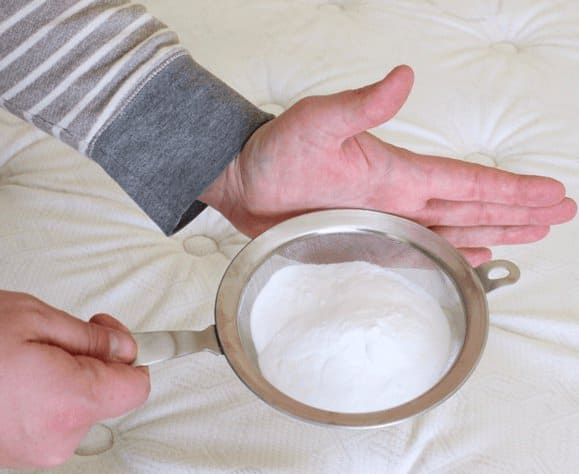
Step 3 – Wait for the bugs to die
Although a bed bug will die within a few hours of encountering the product, it can take days or even weeks to kill them all. They don’t need to come out to feed every night, and they may have hiding places you don’t know about.
Additionally, it won’t kill eggs unless directly applied to them and used with heat. Therefore, the powder needs to be left long enough for any remaining eggs to hatch and leave their hiding places.
If you can, leave it out for a few weeks. This should be long enough to get rid of most of the bed bugs.
Don’t worry about re-applying unless the dust is disturbed. One of the benefits of these products is that they don’t lose their efficacy over time.
We’ll talk about step 4 – cleaning up – in a moment, but before we do, we need to talk about the period between application and clean up.
How Long Does Diatomaceous Earth Take to Kill Bed Bugs?
How long it takes for the treatment to work depends on how you use it.
If you’re using one of these products on its own without further chemical treatment, you’ll continue to be bitten for up to a month after you apply the product. This is why many people prefer to use it either as a maintenance technique or in conjunction with another treatment.
Indeed, if you use a heat treatment on its own you’ll see the same problem: it’s a slow process.
Combining the two will speed up the process.
Scientists have tried to find a better way to use heat treatments to get rid of pests found in agricultural settings. To improve the efficiency of the heat treatments, they added diatomaceous earth, which works by drying out the lipids of the insects’ exoskeletons and causing death.
The impact of using the earth in conjunction with the heat was enormous. Where prior to using the earth, they had to use heats of 50 to 60 degrees Celsius for 48 hours, the earth alone provided an effect similar to heating the area to a temperature between 25 and 40 degrees Celsius.
When the scientists brushed the pests with a powder form of the product, they were able to kill 15-18.3% of the bugs when the temperature was set at 25 degrees Celsius for 10 days, which wasn’t impressive.
However, when they increased the temperature to 40 degrees Celsius and brushed the bugs with powder, 100% of the insects were dead within four hours after the treatment. Even the larvae, which are better able to withstand heat, all died within 24 hours of the treatment.

The bottom line: on their own, these treatments take a month. Together, you could get rid of your bed bugs in a few days.
How to Clean Away Diatomaceous Earth After Use
Reaching Step 3 means your bed bug infestation is gone. It’s finally time to clean up.
Here, you can choose to clean it up for good or clean it up and then re-apply it as a prevention or maintenance technique.
If you’re cleaning it up permanently, you’ll need to be careful.
The best way to remove it from hard surfaces is by using a brush or broom to sweep it away and dispose of it easily.
Although it is non-toxic, it’s also helpful to wipe down those surfaces fully to ensure they’re extra clean.
Alternatively, you can choose to vacuum it away. Although it seems simpler, there is an important warning- you should always use a shop vacuum when cleaning up the insecticide. These products are hard on the filters of traditional vacuums. It could even destroy your vacuum if it’s already on its last legs.
Risks & Precautions
Diatomaceous earth is considered to be safe by the FDA. Moreover, it’s not poisonous.
Rather than killing pests with poison, products with this ingredient work by attacking an insects’ exoskeleton.xx
When an insect, like a bed bug, encounters the pesticide, the earth works to dry out its exoskeleton. By removing the fats and oils from its exoskeleton, it becomes dry and dies. The edges of the earth are abrasive, and this helps the process along by reaching insects more easily.
Pesticide is a scary word, but the reason it remains safe to use among humans is that not only is it not poisonous, but the human body doesn’t absorb it.
If your child sat in your diatomaceous earth and proceeded to eat it, very little is absorbed. In fact, in studies where people ate diatomaceous earth, the level of silicon dioxide in their urine didn’t change.
Why? Silica is already present in your body tissues and silicon dioxide is also normally found in urine. Due to the fact that what is absorbed is excreted very quickly, it doesn’t have much if any impact on your body.
No one recommends eating earth for dinner, but getting some in your mouth won’t hurt you.
There are some things to be cautious of when using these treatments.
This dirt is abrasive and dusty. If you breathe in the earth or get it in your eyes, it may cause irritation. Inhaling too much of it may result in shortness of breath and coughing as well as irritation and dryness.
If you have any underlying respiratory conditions, then you must take extra care when applying and removing the DE, as the kick-up of the ultra-fine particles can be a further detriment to your condition.
It’s always best to use the product carefully to avoid exposure, and to eliminate any potentially serious respiratory side effects as a result of your encounter.
Also, be sure to wear gloves and a dust mask to minimize the amount you breathe in.
Finally, silica and silicon are also safe for your home and yard’s general environment. In fact, they are part of the environment.
These elements are the second most commonly founds elements in soils and make up the most common element in sand, clay, and rocks.
No studies have found DE to have a negative impact on fish and wildlife, because it occurs so abundantly in their natural habitats.
In fact, one study showed that silicon dioxide played an important role in bone health. Chickens given a diet of less silica than normal, had bone density issues.
Summary
Diatomaceous earth is a natural insecticide that is safe for both people and the environment and it will help you remove bed bugs quickly and easily.
Whether you use it as a preventative method or you are using it in conjunction with another treatment, it will do its job safely, naturally, and with relatively minimal effort.
Remember, treating bed bugs is rarely a one size fits all process. In many cases, getting rid of them completely requires professional help.
Have you used diatomaceous earth to get rid of pests? Share your experiences in the comments below.

